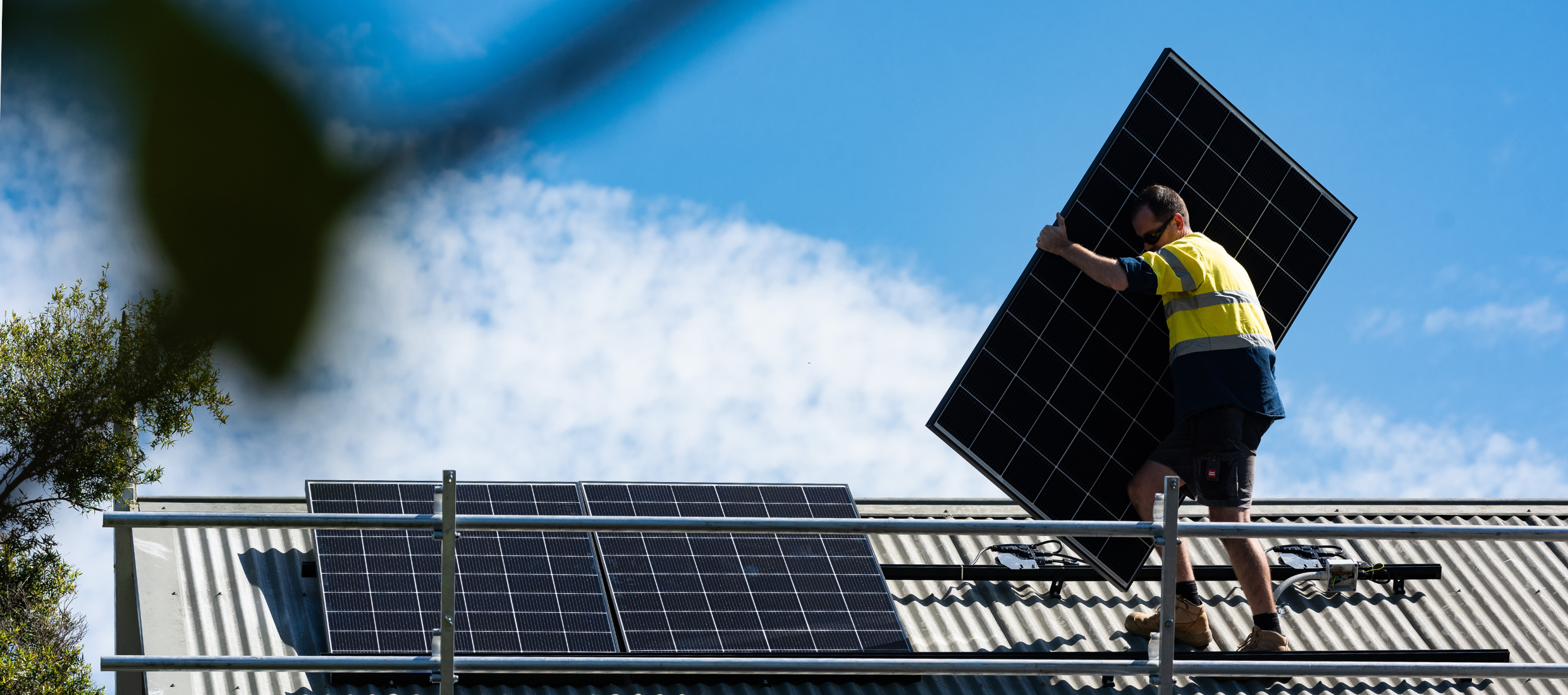Investing in a new solar system can be overwhelming. The boom in rooftop solar has flooded the market with manufacturers and installers, leaving countless options for you to choose from.
That’s where the levelised cost of power comes in. Getting across it can help simplify the decision and maximise the value of your system. It also helps you know you’re getting an honest assessment – the numbers don’t lie.
What is Levelised Cost per kWh?
The levelised cost of energy (LCoE) is a complex equation that’s used to determine the amount electricity has to sell for if a generation project is to break even. This typically involves factoring in fuel costs, generation, deprecation, and more.Thankfully, rooftop solar is significantly easier to figure out. Since you’re generating a lot of your electricity for personal use – rather than selling everything on the market – it’s mostly about figuring out how much you can save by generating your own electricity. The value added to your home by the new asset is a nice bonus on top.
You don’t have to work out fuel costs (the sun is free, after all). Provided you choose panels with the right warranty, you won’t have to work out deprecation either – you know the panels will be replaced when they need it.
With that in mind, let’s run through two quick examples using averages we’ve learned from over 15 years in the business.
Example 1: An excellent quality solar system
We define an excellent quality solar system as anything with a manufacturer’s warranty of 25 years or more. That length is industry leading. While many systems promise a 25-year warranty, make sure you check that’s the product warranty (which covers equipment replacement and, in most cases, labour) and not a performance warranty. The performance warranty only guarantees a minimum level of performance over time and is easy for manufacturers to get out of.
Right now, the average size solar system installed is 10kW – assuming an excellent quality system, that is. These systems cost around $18,000 to purchase and install, and they’re capable of producing around 365,000 kWh over their warranted lifetime. That means you’re paying 5 cents per kWh.
At the moment, the average power cost is around 30 cents per kWh. Assume a 50/50 offset – that is, 50% of your generation used to offset your energy needs, and 50% fed back into the grid – and the numbers work out like this:
182,500 (half of the lifetime generation) x 0.3 (30 cents) = $54,750 you don’t have to pay.
182,500 x 0.052 (feed-in tariff) = $9,490 you get paid.
That equals up to returns of $64,240 over the warranted 25 years. Subtract the installation cost, and the total return on investment is $46,240.
Example 2: A cheaper solar system
Now let’s work through some figures for a cheaper system with a ten-year warranty. This will typically run you around $10,000. It’s cheaper upfront, but the warranted lifespan only covers 146,000 kWh of generation – which works out to 6.8c per kWh.
To get a similar lifespan, you’re likely to have to replace the system after ten years. It’ll cost around $1,500 to remove and around $14,000 to replace. The extra $4,000 is because the number of STCs you’re entitled to for an install reduces each year, with the scheme effectively ending in 2030. (STCs, or small-scale technology certificates, are a form of rebate that help reduce the cost of solar.)
That adds up to a $25,500 upfront cost over twenty years, or 11.45 cents per kWh.
Then, we can do the same sums as before.
146,000 x 0.3 = $43,800
146,000 x 0.052 = $7,592
That’s a total of $51,392. Less the upfront costs, the total return on investment is $25,892 – a little bit over half the RoI on a higher-quality system. In some cases, such as with difficult roofs, the removal cost could be significantly higher.
Full transparency and honesty
To make sure you know we’re not fudging the numbers, we’ve used the same assumptions for both systems. Here’s an explanation of those assumptions:
- The panels are north facing: Facing north is the most efficient placement for your panels and generates the most electricity.
- The price of power will stay the same: Admittedly, this almost certainly won’t happen. However, given Australia is currently looking at power price rises, this only makes solar more valuable in the long run.
- There will be no additional rebates or changes to STCs: Additional rebates could make the math even more favourable to solar, but reductions could reduce RoI. It’s best to talk to an expert you trust so you can get all the facts.
- The panels last their full warranted lifespan: Many poor-quality systems replaced by G Store at six to eight years old rather than ten, as we assume here. In most cases, these households can’t claim their warranty because both the installer and manufacturer have since closed shop and disappeared. This does make our examples slightly more favourable to the cheaper systems.
A choice between upfront cost and long-term relief
As the above examples show, the choice between a higher-end or cheaper solar system comes down to what you need. If you’re willing to eat the longer-term costs and just want lower prices today, then a cheaper option could be right for you.
If you’re willing to spend a bit more upfront for the peace of mind you get with 25 years (or more) of generation, then the premium choice is the right one. It’ll save you significantly more in the long run. And, for most Australians, the house is the most expensive asset – whatever changes you make to it, you should make sure they’re quality ones.
We should admit that there’s one weakness to deciding with this method, and that’s that it doesn’t account for things other than cost.
For example, if you’re committed to a more sustainable home to help the environment, what this method doesn’t account for is that many cheap panels end up in landfill, where they leech toxins into the ground. Solar recycling just isn’t at a point that it can handle a significant number of panels a year – which is another reason G Store chooses to emphasise reliable panels with long warranties.
That said, levelised cost per kWh is still a great way to determine if solar makes financial sense for you – but if it’s more than a financial decision, make sure you do additional research.

